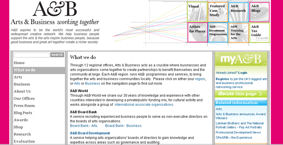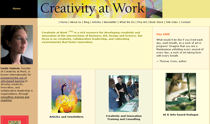Yes that’s right, while the Arts need Business sponsorships, Business also needs the Arts in organizational practices.
Business practices, the workplace, skill requirements have changed so much that the business world seems that it has turned upside down – Leadership styles are morphing – command and control is out, organizations are getting flatter, the competitive landscape is chaotic, people are looking for meaningful work, customers are in control.
The Great Transformation
“We humans today are experiencing the most rapid social and technological change in all human history. All aspects of our lives are changing radically–the ways we work, the ways we play, the ways we learn, and the ways we do business.
This extraordinary metamorphosis of human life has no accepted name so let’s call it simply the Great Transformation.”
Edward Cornish Remarks prepared for presentation to the 2005 AACSB International Deans Conference, Monday, February 7, 2005.
Companies are using the Arts (visual, literature, performing) in a variety of business applications. The reason is not hard to grasp. Organizations are facing unprecedented rapid change and an every increasing demand for faster decision making. The tools that worked in a Newtonian, mechanistic business world are too rigid and less effective.
This new business environment demands a new set of worker skills. Top on the lists of many workforce skill need surveys are creativity, innovation and risk taking. You don’t typically find courses on these subjects in business schools, but you do in Arts schools.
“Art-making has an alchemical effect on the imagination. It awakens the senses and sharpens insights, teaching us to think in symbols, metaphors, and to de-code complexity, so we can perceive the world in new ways. Art provides an opportunity for kaleidoscopic thinking. Each time we shift the lens of our perceptions, we gain new perspectives – and new opportunities for innovation.”Linda Naiman, CreativityAt Work
How Business Uses The Arts
COMPANY | ARTS-BASED METHOD | BUSINESS OUTCOME |
McGraw Hill Companies | Theater, Jazz | Leadership Development, Corporate Values |
American Express | Music | New service ideas |
Unilever UK | Visual Art, Music, Theatre | Corporate Culture |
Halifax PLC | Theatre | Improve Communication Skills |
Principal Financial Group | Visual Arts | Generate new ideas, new ways of solving work challenges |
PricewaterhouseCoopers
| Theatre | Leadership Development |
Bristol-Myers Squibb | Storytelling | Knowledge Management |
Barclays | Music | Team Building |
Quest International (ICI). | Art (Paintings) | New Product Development |
Jet Propulsion Labs | Storytelling | Capturing Tacit Knowledge |
Business use of the Arts transcends the size of the company and application. The Arts can be used for applications as simple as building teamwork for a small group, to complex, corporate-wide culture change. In addition, it appears that every Art form can be applied to a business matter.
Why The Arts Work In Business
When you look at the nature of Arts-based vs. traditional methods of learning and knowledge transfer, it becomes more apparent why the Arts work in business environments.
Let’s look at traditional business learning methods compared to Arts-based methods:
TRADITIONAL | ARTS-BASED |
Didactic “Sage on Stage” lectures | Experiential |
Hard skills/Analytical | Soft skills/Emotional |
Explicit knowledge focus | Tacit knowledge focus |
Left-brain logic | Right-brain creative |
Normally passive | Always Interactive, participatory |
Mechanistic | Organic |
Tell | Show |
The Arts have demonstrated abilities to touch hearts in addition to minds.
Therefore the person or group more easily grasps the essence of what the Arts-based program attempts to convey. As Harvard Professor John Kotter puts it,”…in the real world of business change is driven by the heart – not by numbers kicked out of a spreadsheet.”
How To Learn More
Fortunately there are some forward looking organizations that assist business in applying arts-based techniques. One of the leaders is UK based Arts & Business.

Visit the Research section to access the “Creativity in Business” report. Another must visit section is “Case Studies” which is an excellent database of Business and Arts collaborations.
In Canada there is Creativity At Work.
The Articles section has many references. Here you will find articles on creativity, leadership and employer branding. Make sure to read “The Top Ten Reasons to Play”. This a great site with lots of content.

Here are some additional worthy sites.
Movers & Shakespeares presents Fun, Team-Building, Executive Training and Leadership Development based on the insights and wisdom of the Bard… as relevant in today’s world as they were 400 years ago!
On Your Feet “relate, create, communicate and lead all while having a ridiculously good time” This is a somewhat zany site but their navigation and web design alone are worth a visit. Also visit “Case Studies” Also see if you can get two funny looking characters to pop up on the lower left, you will see “need a surprise?” if you do a mouse over just above them. Not content rich but I like what they have to say.
Ok, now break a leg.
Ed Konczal has an MBA from New York University's Stern School of Business (with distinction). He has spent the last 10 years as an executive consultant focusing on human resources, leadership, market research, and business planning. Ed has over 10 years of top-level experience from AT&T in the areas of new ventures and business planning. He is co-author of the book "Simple Stories for Leadership Insight," published by University Press of America.